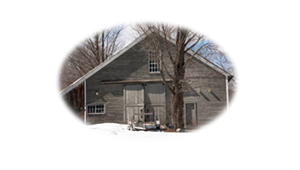SHEDS
Bauhan Publishing
Howard Mansfield, Joanna Eldredge Morrissey (Photographer)
Where I live, we really have only one kind of building, old and new, big and small: the shed. From woodsheds to barns, to houses, meetinghouses, and covered bridges, they are all sheds. New England has never gotten much beyond the shed and we’re the better for it. In fact, it’s what tourists respond to, though they certainly won’t say, “We’ve come to see the sheds.” But they love covered bridges, and the way that the houses lining the common seem like the little brothers of the bigger meetinghouse, or the way the connected sheds and barns trailing behind a house stand there like a third-grade class lined up for its photo.
Sheds are utilitarian. Sheds contain small things—wood and tools—and big: summers, winters, solitude, festivity. The smallest sheds can be liberating: a bob house on a frozen lake, a summer cabin. They can shelter dreams.
Sheds are reticent. They stand back; they’re demure, easily adaptable. They let life flow on through.
A shed is the shortest line between need and shelter. It’s a trip from A to B. It’s often built of found materials; it’s built with a distilled practicality.
The best sheds house this contradiction: they are built according to accepted rules and thus they are free.
This is a small tour, near and far, of sheds.

